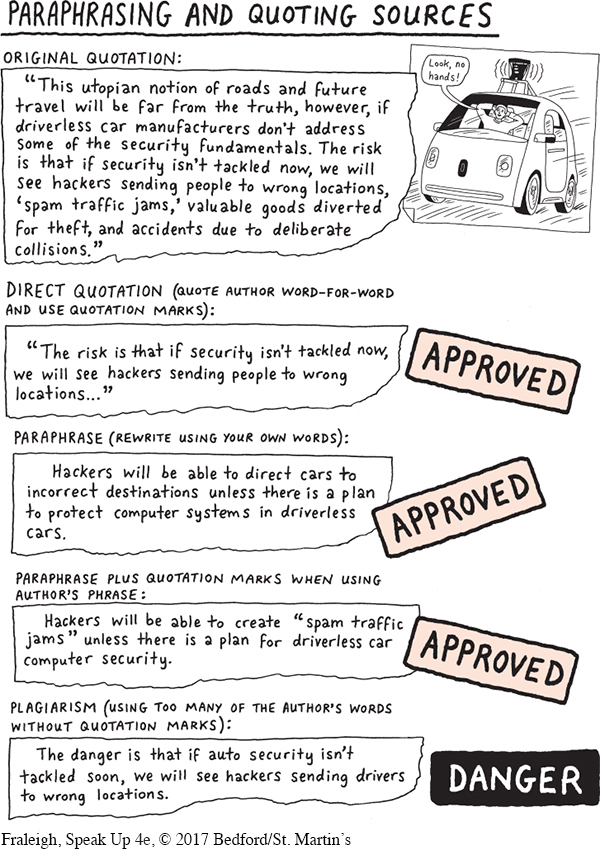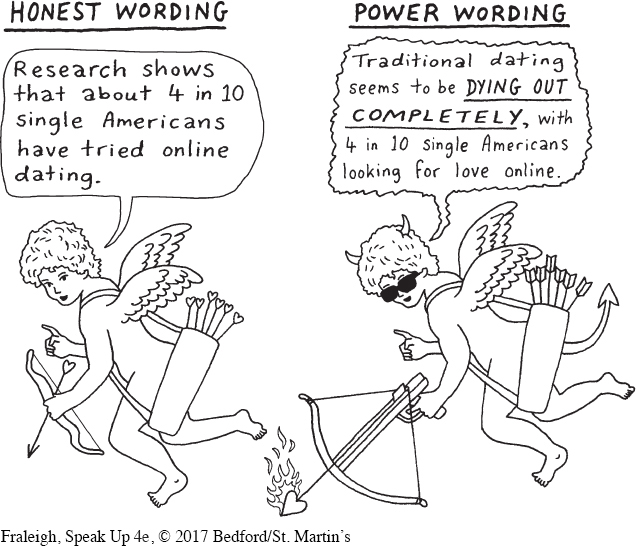Present the Information Accurately
After you cite your evidence, the next step is presenting the information. You have an ethical obligation to present the author’s ideas accurately. This is accomplished either through direct quotation or paraphrasing.
When you use a direct quotation, you present his or her ideas word-
When you cite your source with a direct quotation, use the claim-
Page 218

Page 219
Family farms are thriving. [claim] An example is provided by Chrystia Freeland, global editor-
Page 220
Page 221
When you paraphrase, you restate the author’s information in your own words. To paraphrase ethically, you must be sure that the words are your own instead of the author’s. A good technique for paraphrasing is to read the author’s words and make sure you understand the idea. Then put the source aside, and write down the idea without looking at the author’s words. Do not use your word processor to cut and paste the author’s words and then change a few terms. In our experience, this practice often gets students in trouble for plagiarism because they end up using words that are mostly the author’s. If you discover that you are using sentences or even phrases that the author used, then those words must be placed in quotation marks.
It is also essential to paraphrase accurately. The words you use must correctly represent the author’s intent. It is unethical to present evidence using power wording—that is, to reword evidence in a way that better supports your claim but misrepresents the source’s point of view.
To watch someone giving a direct quotation in a speech, try Video Activity 7.3, “Citing Sources (Statistics).”
